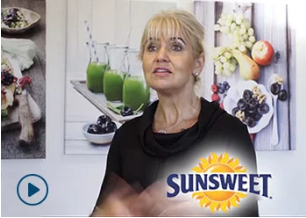- HOME
- ABOUT US
- SERVICES
- CUSTOMER STORIES
- OUR EXPERTS
- AI KEYNOTE SPEAKER
- CONTACT US
- RESOURCES
555-555-5555
In need of some sound digital marketing advice?
Book a free consultation with one of our experts.

Making a difference in our clients’ lives
We positively impact the lives of our clients beyond their KPI reports.

The Rise Of Video Marketing
Gerardo Kerik
Digital Marketing Consultant
April 21, 2022

Let’s take a minute and think about the video marketing you’ve seen recently. Whether you get most of your video content on Facebook or YouTube, it’s safe to assume that most of the video ads you’ve seen represent huge brands.
You can think about that from two different angles.
First, those big companies are winning this “king of the hill” battle for ad space because they have the budget for it. Second, they are fighting for that ad space because it’s so valuable.
Small businesses can learn a lot from international corporations. Of course, you won’t be able to replicate their marketing strategies. (Production value and market penetration are often locked behind budget limitations.) But what you can do is look for ways to scale down their strategies, fine tune a few of the details, and then turn it into a resource that does fit your unique company.
Video marketing is one of the areas where you can still receive the benefits without trying to match the budget of Apple, Google, or Coca-Cola.
And since video marketing generates 66% more qualified leads (as well as a 54% increase in brand awareness), you really can’t afford to not take advantage of this channel — especially as a small business.
A Value Proposition For Video Ads
At face value, it’s easy to be intimidated by the thought of video creation. You can watch top ads from last year and get caught up in the famous actors, the expensive equipment, and the need for a full production team. But all of those things are completely scalable to your budget.
Making good video content means taking advantage of the tools available to small businesses. That might mean using an online resource (like a shot list template) instead of hiring a production assistant. Or maybe you use an online video editing site to avoid paying for high-end software.
These tools can help you get that big-budget feel without, you know, a big budget. Because the truth is that video content is in high demand, no matter your industry.
Let’s look at four video marketing-centric stats from HubSpot:
- People spend one-third of their “online time” watching video content.
- Two-thirds of people are more likely to buy something after seeing a video about it.
- 90% of customers list product videos as a major influencer in their buying habits.
- One-third of all online ad spend goes toward video ads.
Those numbers build up a pretty clear narrative. People watch a lot of video content. And the videos they watch play a major role in the sort of products they buy and businesses they support. As a result, a big chunk of the global advertising budget goes toward video ads.
And really, that value proposition really solidifies the worth of video marketing for your business.
Building A Video Marketing Strategy
Now that you can see just how valuable video marketing is, the next step is figuring out how to fit that into your existing strategy for 2021 and beyond.
A huge part of that is understanding what goes into video production and how you can streamline and simplify that process. Which means looking for affordable (and often multi-purpose) online apps or services that will make video marketing a realistic goal for your business.
Thankfully, you can recycle a lot of the research you’ve put into your existing marketing strategies. Video content may need extra resources or tools, but your grasp of your audience and target keywords can — and should — influence the sort of videos you create.
- Start by setting goals. Are you interested in building a video channel (either on YouTube or Facebook) that generates brand awareness? Is your main focus a series of videos for an upcoming product launch? Do you want to increase web traffic through paid video ads? These are the things you’ll have to ask because they will determine your video marketing strategy.
- Think about your presentation. When we hear “presentation” in terms of video, our minds jump to camera angles or animations, or even color choices. But marketing videos take many different shapes, and each presentation style has some inherent qualities. (Whiteboard videos work best for educational content, interview videos are great for testimonial content, and so on.) Take that into consideration when you build your strategy in order to remain efficient.
- Build content within your sales funnel. You could dedicate half of your marketing budget to video content and fail if those videos don’t have a clear focus/objective. Like with any new project, think about which segment of your audience you want to reach and how the videos can best encourage them to take action.
- Keep your platform in mind. Viewers expect different things on different channels. A YouTube video looks different than an Instagram video, and your audience will expect you to follow those standards. (That can also determine how visible your videos are on those platforms!)
As you begin to explore different video styles and build out a video marketing calendar, always remember that there is a lot of flexibility in video. You should be testing content to see what works, and using that information to shape future projects.
Maybe you want to create a channel where you share stories from inside the company, introducing employees to customers and building relationships with the audience. You can pair that with how-to videos where those “familiar faces” become educators, leveraging that familiarity to establish trust with customers.
This is where video marketing gets exciting. You get to find a sweet spot for your business, that balance between engaging content (that attracts new leads) and educational content (that supports your existing customers).
Once you create a pipeline for video content, you can start thinking about topics like YouTube SEO, video ads on social media, and other avenues for future opportunities. And all of those benefits can support the targets your business is already chasing, like Google search rankings and higher website conversions.
Yes, video marketing is a powerful tool, with untapped potential that only expands over time. But it’s also a gateway to a lot of other things, from connecting with your audience to exploring new corners of your existing industry.
At the end of the day, that makes video marketing an invaluable tool for small businesses, no matter your budget, team size, or production skills.
Drew Gula is the copywriter at Soundstripe, a royalty free company that provides creators and businesses with radio-quality uncopyrighted music.
WSI Digital Boost is a digital marketing agency offering a full range of
digital marketing services, including video marketing, social media marketing, among others. For help creating effective online marketing campaigns,
contact us today.
The Best Digital Marketing Insight and Advice
The WSI Digital Marketing Blog is your go-to-place to get tips, tricks and best practices on all things digital marketing related. Check out our latest posts.
Subscribe Blog
Thank you for contacting us.
We will get back to you as soon as possible.
We will get back to you as soon as possible.
Oops, there was an error sending your message.
Please try again later.
Please try again later.
*You may unsubscribe from digital communications at anytime using the link provided in WSI emails.
For information on our privacy practices and commitment to protecting your privacy, check out our Privacy Policy and Cookie Policy.
For information on our privacy practices and commitment to protecting your privacy, check out our Privacy Policy and Cookie Policy.
Don't stop the learning now!
Here are some other blog posts you may be interested in.
Interested in AI Training or Consulting for Your Team?
If your organization is ready to explore how AI can improve productivity and transform your processes, let’s talk.
Book a 15-minute discovery call with us to discuss a custom AI training or consulting plan designed specifically for your team’s goals.
Take the first step toward making AI a powerful advantage for your business!
© 2021 WSI. All rights reserved. WSI ICE and WSI IM are registered trademarks of RAM. Privacy Policy and Cookie Policy
Each WSI Franchise is an independently owned and operated business.



